Growing energy crops on contaminated land for biofuels and soil remediation

Soil pollution is a global problem making vast areas of agricultural land unexploitable
are potentially contaminated
of land cannot be cultivated
GOLD develops solutions to grow lignocellulosic crops on contaminated sites
- Producing sustainable biofuels with no risk of indirect land use change
- Removing soil pollutants to ultimately bring polluted land back to agriculture
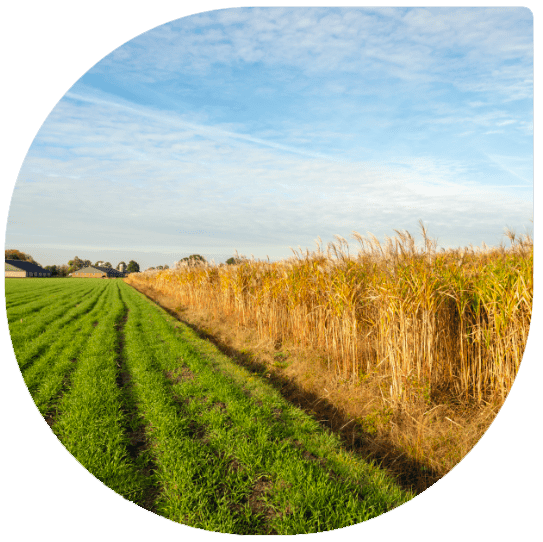
Approach
Grow energy crops on contaminated land
- Optimization of high-yielding lignocellulosic crops for phytoremediation
- Pilot field trials on polluted sites in EU, China and India
- Optimization of phytoremediation for organic and inorganic soil pollutants
Produce low ILUC risk biofuels
- Biomass pre-treatment, gasification and fermentation
- Biomass pyrolysis and upgrading to refinery-compatible intermediates and fuels
- Extraction of pollutants in concentrated forms
Optimize the value chain
- Integrated environmental, economic, social assessment
- Modelling of the selected value chains
- Design of effective replication strategies
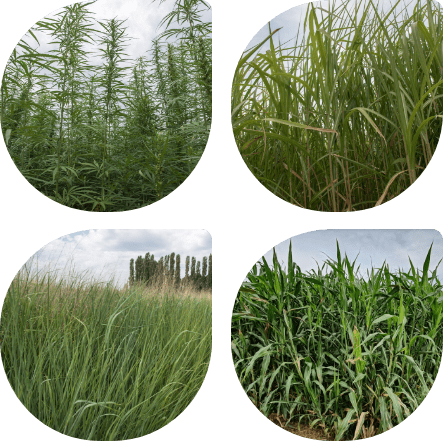
Four high-yielding lignocellulosic energy crops are used:
miscanthus, switchgrass, sorghum and industrial hemp.
They have been chosen on the following criteria:
- They grow rapidly and are tolerant to contaminants and other stresses.
- They are non-food crops with high biomass yields (10-25 t/ha) and low input requirements.
- They can provide feedstock for advanced biofuels with low ILUC risks.
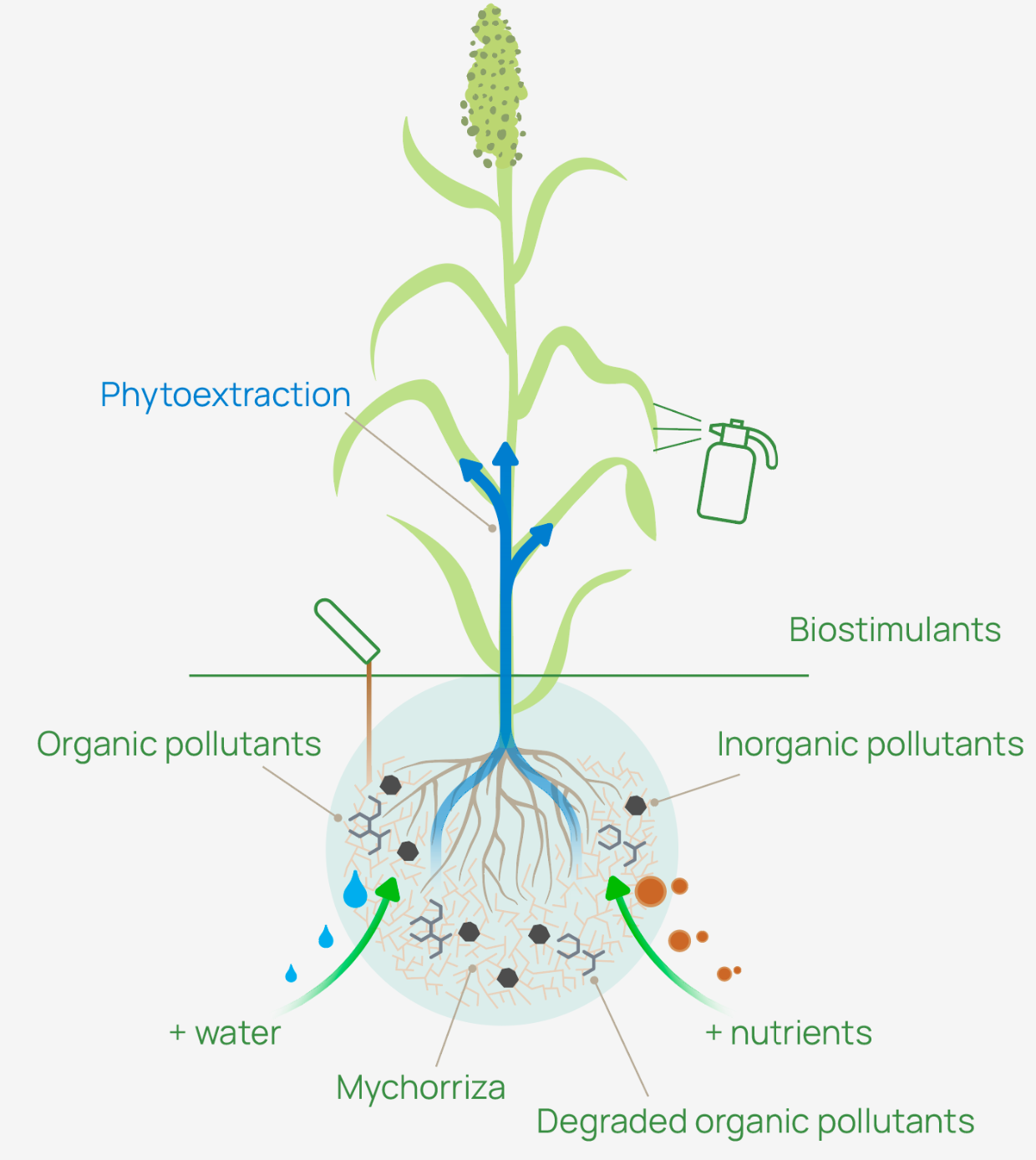
GOLD applies two different types of phytoremediation:
- Bioaugmentation: the use of microorganisms in polluted soils to accelerate the removal of inorganic contaminants
- Phytoextraction: the cultivation of plants to extract metal(loid)s from polluted soils.
Two innovative agronomic practices will be also applied:
- Mycorrhiza: a symbiotic association of fungi with roots that improves plant nutrient and water uptake.
- Biostimulants: substances or organisms that enhance plants nutrient and water efficiency and stress tolerance.

Two conversion routes based on thermochemical processes will be developed in GOLD
- High-temperature biomass gasification in entrained flow mode, producing a clean syngas which will be further fermented into liquid biofuels.
- Biomass pyrolysis and upgrading of the bioproducts into refinery-compatible intermediates and Fischer–Tropsch Fuels (FTfuels).
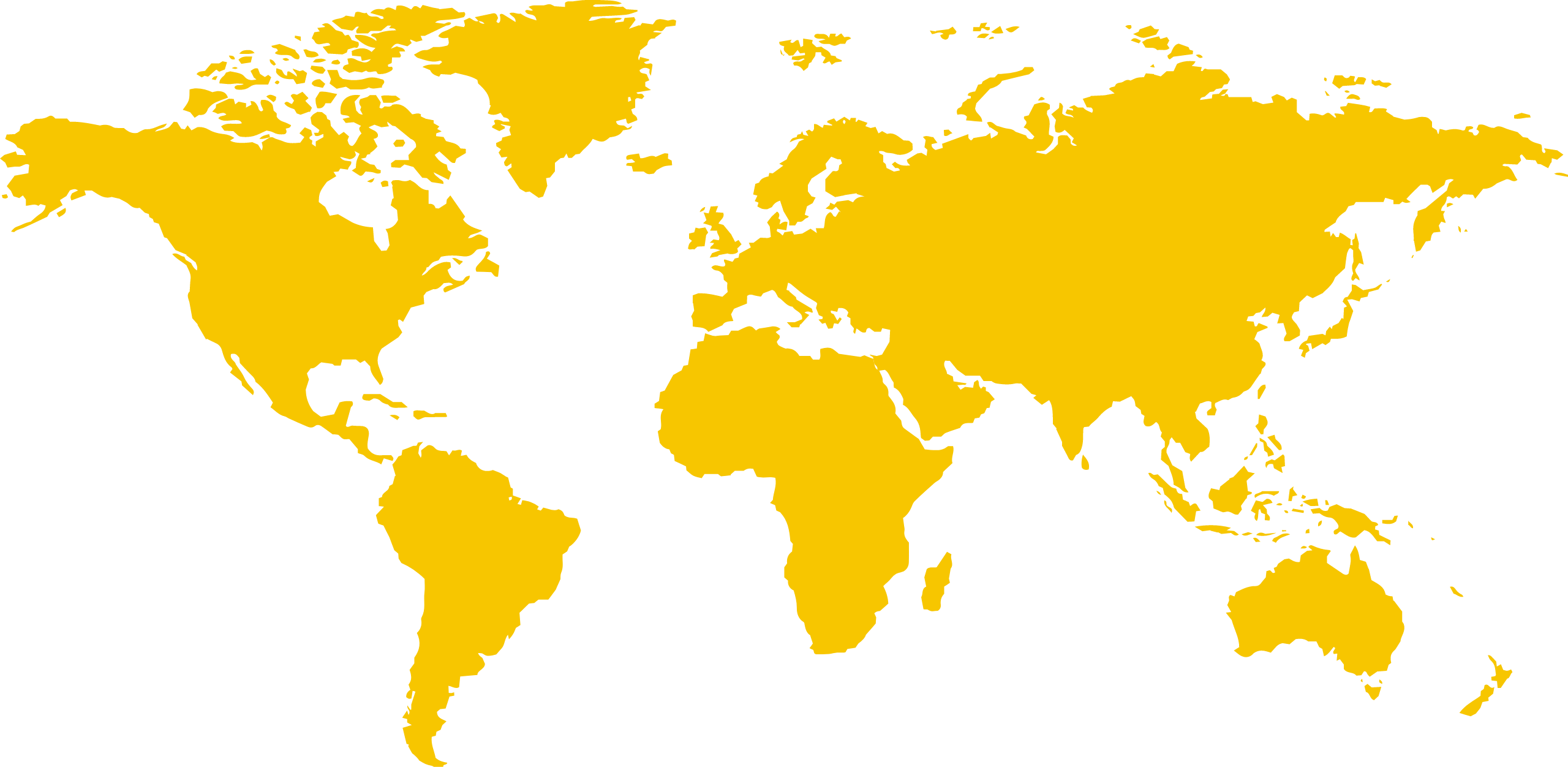
GOLD carries out its activities in seven pilot sites located in Greece, France, Italy, Poland, China and India
These sites are polluted by different types of contaminants, including heavy metals, metalloids and organic compounds.
They are located in unused and or abandoned arable lands suitable for mechanized agricultural crop production.
GOLD aims to bring forward positive impacts to several global societal challenges
Bring polluted land back to agricultural production through improved phytoremediation, thus contributing to a zero pollution toxic-free environment.
Produce low ILUC risk biofuels on contaminated land for a clean, affordable and secure energy.
Promote international collaboration towards the Mission Innovation Challenge 4 on advanced biofuels.
Contributing to UN Sustainable Development Goals.
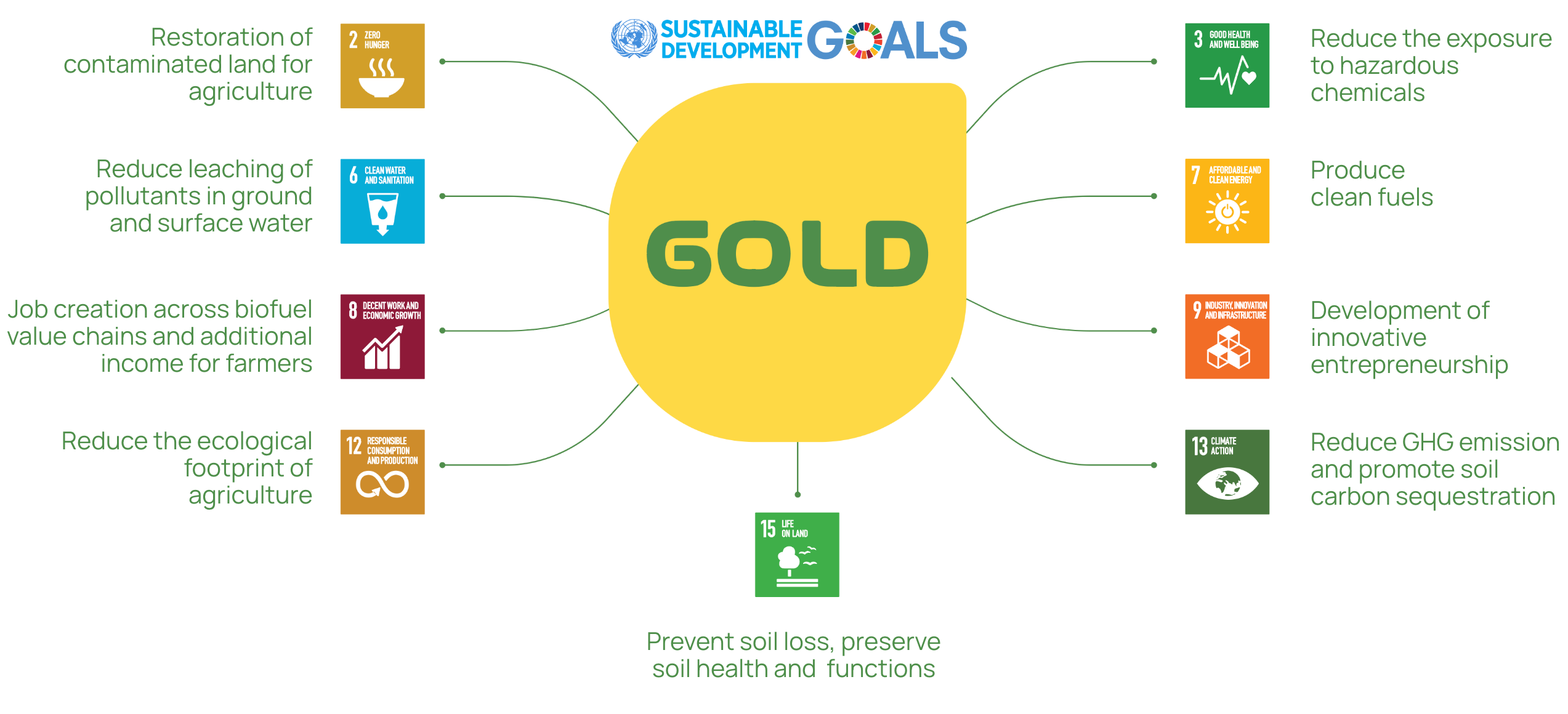
Discover more on GOLD
by watching this video!
Recent news
GOLD Pilot Site Factsheets!
In our new project factsheets you can quickly learn about each of the European pilot sites.

